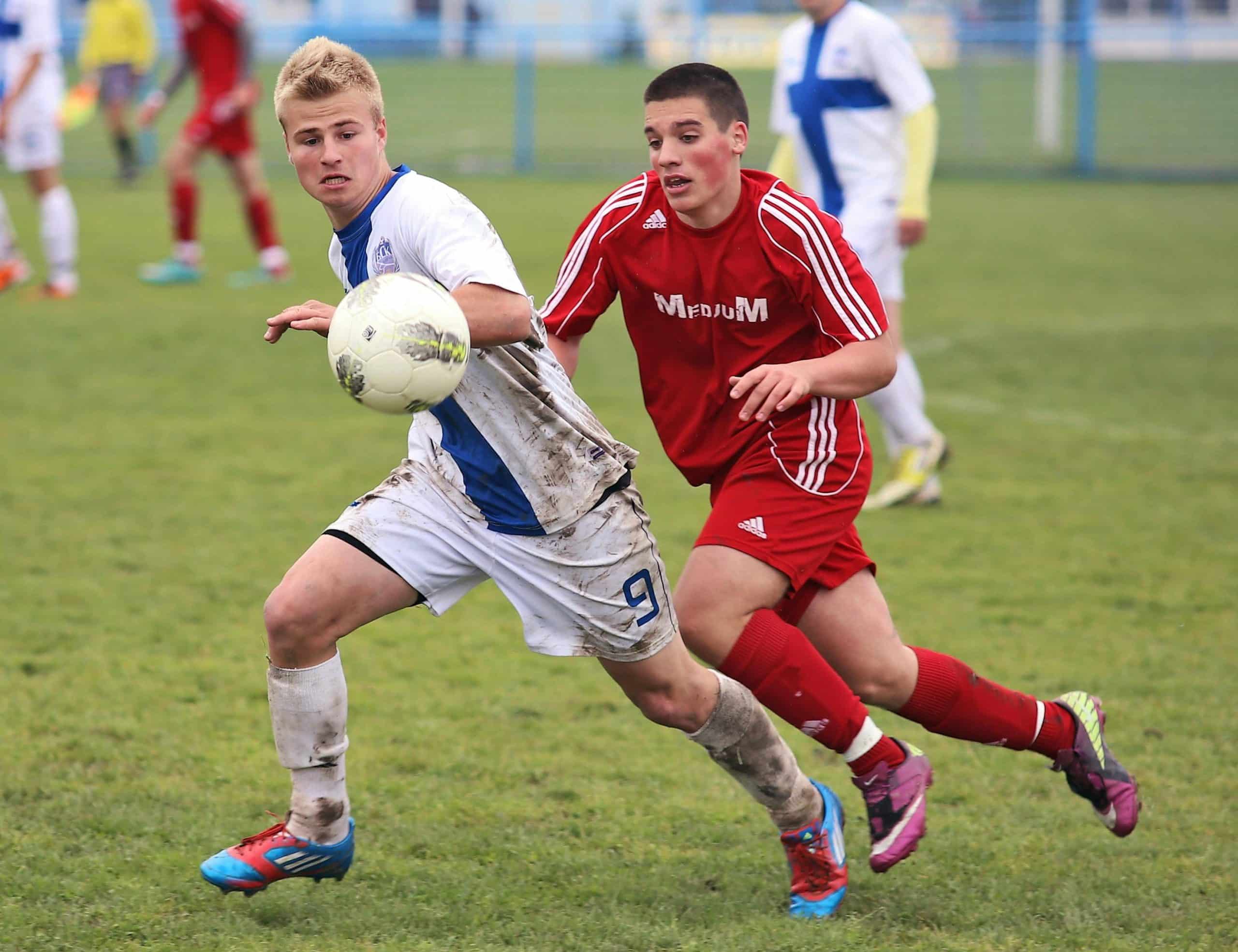How Can Dance Training Benefit Football (Soccer) Players in Terms of Balance and Coordination?

In the world of sports, athletes continually push the boundaries of their physical capabilities to achieve superior performance. Football players are no exception. Traditionally, training regimes for football players have focused on strength and stamina. However, the increasingly competitive nature of the sport requires players to enhance their agility, stability, and coordination. Many professional football teams, from the English Premier League to Major League Soccer in America, have started incorporating dance routines into their training programs. This integration is not a mere publicity stunt but a strategic approach backed by scientific research.
Ballet Training and Football
So, how can footballers benefit from ballet, a form of dance that seems worlds apart from the tough, high-impact nature of football?
In the same genre : What Role Do Sports Chiropractors Play in Optimizing Performance for Professional Golfers?
Ballet, at its core, is about balance, control, and strength. It requires concentration, spatial awareness, and coordination. These aspects are also critical for a footballer’s performance on the field.
The Science Behind the Connection
A study published on PubMed in 2018 investigated the effect of a 12-week ballet training program on the balance and agility of youth football players. The subjects, aged between 8 and 12 years, were divided into two groups: a control group that received regular football training, and an experimental group that supplemented football training with ballet exercises. After 12 weeks, the researchers found that the experimental group showed significant improvement in balance and agility compared to the control group.
In the same genre : How Can Elite Gymnasts Utilize Mental Imagery to Prepare for Competitions?
The results of this study align with other research in the field. A 2012 study quoted by Google Scholar reviewed several articles assessing the benefits of dance training for athletes. The consensus was clear: incorporating dance training into sports exercise programs improved body coordination, balance, and overall performance.
Practical Application in Football Training
Ballet, or dance training in general, can be incorporated into a football player’s regular training schedule in various ways. A simple routine can include exercises like pliés for strengthening the lower body, tendus for improving foot coordination and flexibility, or relevés for enhancing calf strength and balance.
Football teams can bring in a ballet instructor to guide the players, or they can use online resources available on platforms like YouTube. Some professional football teams have even established partnerships with ballet schools to provide regular training for their players.
The Benefits of Dance Training for Injury Prevention
Football is a physically demanding sport with a high risk of injury. Strains, sprains, and fractures are common occurrences in the sport. Incorporating dance training into football training programs can help mitigate these risks.
Enhanced Stability and Strength
Dance training, especially ballet, emphasizes the importance of maintaining a center of gravity and a strong core. This focus on core strength and stability can help football players reduce the likelihood of injuries. A strong core enhances stability, ensuring that players can maintain their balance in high-intensity situations, and thus preventing injuries caused by falling or colliding with other players.
Improved Coordination and Agility
Football often involves unpredictable movements, requiring players to quickly change direction, speed, or body position. Such movements demand excellent coordination and agility, and dance training can significantly improve these skills. By practicing complex dance routines, football players can develop a better sense of their body in space, which can help them react more effectively to unexpected scenarios on the field.
Preventing Overuse Injuries
Football training often involves repetitive movements, which can lead to overuse injuries. Dance training, on the other hand, involves a wide range of movements that work different muscle groups. By incorporating dance into their training program, football players can avoid overuse of certain muscles and reduce the risk of related injuries.
Dance as a Complement to Traditional Football Exercises
While dance training cannot replace traditional football exercises, it offers a complementary approach that can enhance players’ performance. The combination of conventional training methods with dance routines can create a well-rounded training program.
Boosting Mental Toughness
In addition to physical benefits, dance training can also contribute to mental toughness, a crucial aspect of any sport. Ballet, in particular, requires intense concentration and precision, demanding dancers to perform complex movements while maintaining grace and fluidity. This high level of focus can translate into greater mental resilience on the football field.
Encouraging Creativity
Football is not just about physical prowess; it also requires creativity and the ability to think quickly on one’s feet. Dance, particularly improvisational forms, encourages the development of these skills. Incorporating dance into football training can stimulate players’ creativity, allowing them to come up with innovative strategies on the field.
In conclusion, the integration of dance training into football training programs can yield significant benefits in terms of balance, coordination, strength, and mental toughness. While the idea may seem unconventional, the scientific evidence supporting its effectiveness is compelling. As football continues to evolve, teams that adopt such innovative training methods may gain a competitive edge.
Incorporating Dance Training in Football: Exploring the Strategies
Dance training can offer a wealth of benefits to football players, improving their balance, coordination, strength, and mental toughness. But how exactly can this form of training be incorporated into a football player’s routine? What strategies can be employed to ensure its effective integration?
Leveraging Technology and Online Resources
In today’s digital age, the internet is packed with resources that can aid in the effective integration of dance training into football routines. From comprehensive online dance tutorials to digital platforms like YouTube where professional dancers share their routines, football players have easy access to a wide range of resources that can guide them in their dance training.
Collaborating with Professional Dance Instructors
Professional dance instructors, particularly those experienced in ballet, can be brought in to guide football players in their dance training. Apart from teaching the players various dance moves and routines, these instructors can also provide valuable insights into how dance principles can be applied to football. They can customize training programs to suit the specific needs of the players.
Incorporating Dance Moves into Warm-up and Cool-down Sessions
Football players can begin and end their training sessions with simple dance moves. This strategy not only makes the training sessions more fun and engaging but also enables the players to gradually build their dance skills. Over time, these sessions can be made more challenging with the introduction of more complex dance moves.
Pairing Dance Training with Traditional Football Exercises
Integrating dance training with traditional football exercises can create a well-rounded training program. For instance, players can alternate between dance and football exercises during their training sessions. This approach not only enhances the players’ physical capabilities but also helps them develop a single leg hop or core stabilization, essential for improving balance and reducing injury risk.
Conclusion: Dance Training – A Competitive Edge in Football
The world of football is constantly evolving, driven by a relentless quest for superior performance. Traditional training methods, while essential, are no longer enough. Innovative approaches, such as incorporating dance training into football routines, are gaining traction, backed by scientific evidence highlighted in PubMed and Google Scholar articles.
The benefits of dance training for football players in terms of balance, coordination, strength, and mental toughness are significant. Dance training, particularly ballet, enhances stability and muscle strength, improves motor control, promotes creativity, and boosts mental resilience. It also plays a crucial role in injury prevention, reducing the likelihood of overuse injuries, and sprains.
Ballet training, with its emphasis on control, balance and strength, can be particularly beneficial to football players. By incorporating ballet moves into their training routine, football players can improve their foot coordination, enhance their calf strength, and develop a strong core.
While dance training cannot replace traditional football exercises, it serves as an effective complementary approach. By seamlessly integrating dance training into football routines, players can push their boundaries and enhance their performance on the field. As the sport continues to evolve, teams that adopt such innovative training methods may gain a competitive edge.
In light of the compelling scientific evidence and the undeniable benefits, it seems clear that dance training has a crucial role to play in football. After all, football, just like dance, is not merely about physical prowess. It’s a beautiful blend of strength, balance, coordination, and creativity.
